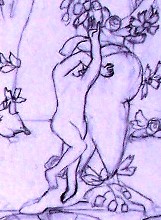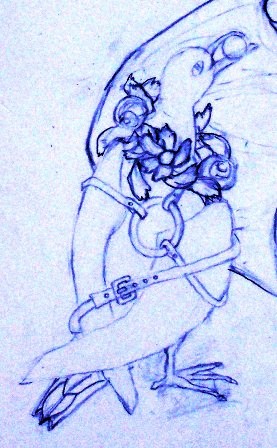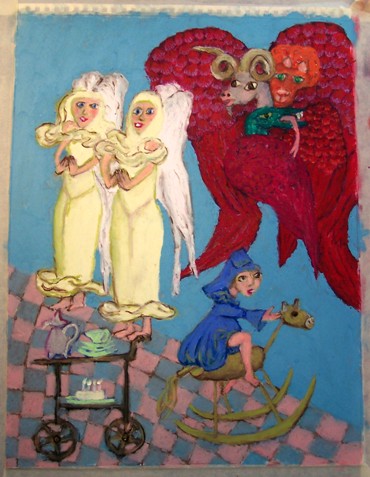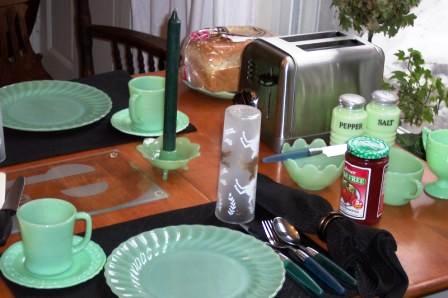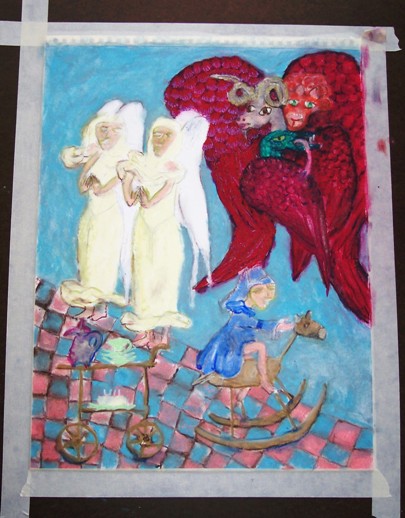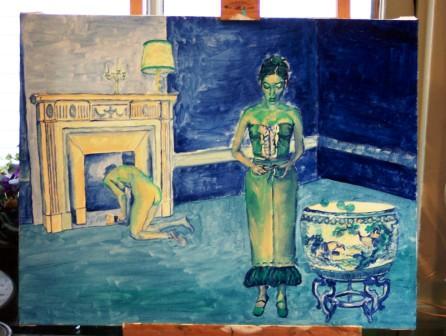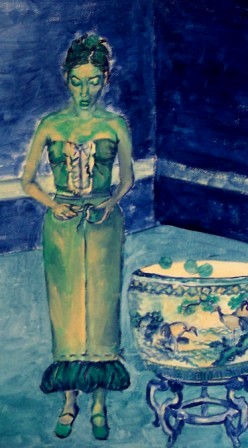Mood:
Topic: email questions
Why you think art works as a therapy?
When I was 21 I had been living in a mental institution in Hartford, Connecticut for almost two years. My situation there was grave. I had not been making the anticipated recovery that staff had predicted when I was first admitted. At that time they put me to live on a ward where the average stay was six months. Now they were reconsidering moving me to a long term unit with the prognosis that I would need to live there for a year or two more.
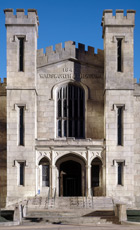 When they told me their plan I begged them for one more chance to make enough of a recovery that I be discharged to a half-way house. The hospital's criteria for wellness was that I cease being continuously suicidal and that I obtain and keep a part-time job outside of the Institute walls. Perhaps, then, an angel came to look over me for I was able to obtain a job at a prestigious world class museum in downtown Hartford, The Wadsworth Atheneum. At the interview for a position at the museum information desk, I was frank about my situation. I would walk from the Institute to the Wadsworth and then walk back home where I would be locked again on a psychiatric unit. The woman who would become my boss hired me. At first the job was volunteer, with the possibility of paid employment in the future.
When they told me their plan I begged them for one more chance to make enough of a recovery that I be discharged to a half-way house. The hospital's criteria for wellness was that I cease being continuously suicidal and that I obtain and keep a part-time job outside of the Institute walls. Perhaps, then, an angel came to look over me for I was able to obtain a job at a prestigious world class museum in downtown Hartford, The Wadsworth Atheneum. At the interview for a position at the museum information desk, I was frank about my situation. I would walk from the Institute to the Wadsworth and then walk back home where I would be locked again on a psychiatric unit. The woman who would become my boss hired me. At first the job was volunteer, with the possibility of paid employment in the future.To prepare for my job I would wear my nicest clothing and a pair of heeled shoes. I put on make-up. And then, it seemed, I walked down the street to a castle filled with treasure. The Wadsworth Atheneum is the oldest continuing running art museum in America. The main lobby was built with architecture that resembles a castle. Added on to this original wing was a stately hall filled with nine different type of marble and brass inlay, sweeping marble stairs, and a skylight made from Tiffany glass. It had been funded by the wealthy philanthropist Pierpont Morgan and intended to echo the architecture found in classical European buildings. Over the decades many artistic treasures were donated or bought and eventually a dazzling permanent collection formed. Works on display ranged from ancient Sumerian, Egyptian and Greek statues to paintings by Western Civilization's greatest masters, both old and new. And me, little broken institutionalized me, got to walk through the quiet halls and stand in front of some of the greatest achievements of the human mind and spirit. I looked, and the images filled me, leaving less room for brooding emotions.
The Boss lady who hired me occasionally wore a coat to work that had a pin stuck to the lapel. The pin said, "Art Saves Lives". The Wadsworth certainly saved my life. I would go on to work there with pay for the next four years and become part of the volunteer docent program that gave tours to the general public and to school children.
Understand that I made no art while I worked at the Wadsworth. That would come later. What the Wadsworth did was first fill me with pride. It was a job that I grew into, becoming a more valued employee the more facts I learned about the museum history and art. Second, it got me talking to normal folk and had normal folk talking friendly right back to me. The long hospital stay had been demoralizing, in part because I was always being treated like a case to be studied, a walking illness. While staff were certainly humane they emotionally removed from those under their care. Conversations included no personal information and I was usually addressed by my last name. Talking to other patients was more social, but we were all so sick that the topics we liked to talk about were usually sad and traumatic. I remember hearing stories of incest and rape, the past attempt at suicide by hanging or the slashed wrist, and listening to earnest psychotic rambling about devils and aliens and the nurse who was trying to poison us.
In the hospital there was the portent of violence in the air. A light bulb was smashed and a shard of glass used as a weapon. If a pair of scissors went missing we were all strip searched. If a nurse miscounted or forgot to count her needles we were strip searched. Staff was kicked. Staff took down a patient to be restrained so violently that the young man vomited. People screamed incessantly when they didn't get their way. Several held napkins under their mouths to catch the drool created by excess medication. Men and women would sit, their whole body shaking violently, as the Valium or heroin addiction passed out of their blood. I got beat up by my "boyfriend" because I refused to give him blow jobs in the staircase anymore. It was the only time in my life that I have been violently attacked. Sometimes patients succeeded in killing themselves while they were living on the unit. Sometimes they killed themselves right after they left.
Part of the function of art is to present an alternative reality. People who have lived with mental illness desperately need escape from their illness and I think that art can provide such an escape. It is possible to forget many things while you are making art. It is possible to create a more beautiful world in your art.
And in a simple way, art is honorable. It is a high function of the human mind, and society reacts to it with respect and wonder. Mental illness with the disability and poverty it creates makes one feel socially dishonorable. To say, "I make art" gives a person an identity that is a lot better than "I am sick".
After I started working at the Wadsworth Atheneum I rapidly improved. My emotions lifted. I gained a new, healthy identity. My job was to be one of the many caretakers of priceless artifacts. I got a lot of practice having ordinary conversations with ordinary people. And I spent a lot of time quietly looking at art. Part of the damage that the schizophrenic thought disorder did to my mind was to render me unable for about a year to either read or write. The loss of the ability was quite a shock because shortly before my hospitalization I had been a student on the Dean's List at Barnard College in New York City, rewarded with A grades in Philosophy and Religion and English Literature. But there is no doubt that I suffered a loss of the ability to think in abstract terms. The difficulty reading and writing was an extension of this because language is symbolic and is created through the logic of grammar. Logic, rules, and one thing substituting for an abstract concept were frequently just beyond the reach of my disorganized mind. It has taken many, many years of practice to arrive at the writing skills I have today.
Looking at art involves no language skills. Communication through artwork is visceral, immediate, often unconscious, and concrete. There can be ambiguity in what a picture might mean, but there is no ambiguity about what is presented to the eyes. In my opinion art lights up the more primitive parts of the brain that are least affected by the schizophrenic thought disorder. Cave men left behind pictures. Civilization advanced to language later.
Given a choice between writing and painting or drawing I would chose the artmaking activity. The reason goes back to the onset of schizophrenia and how I believe it changed the functioning of my brain. It is now easier for me to think in a concrete manner than an abstract way. I wouldn't say that "easier" is a precise word. A better way of putting it is that making art is less painful than writing or socializing for extended periods of time. The frequent lack of logic necessary to create a drawing or pick a color is soothing. The brush pushes pigment in wet solution around on a flat surface and the act is very concrete. With a flick of the wrist, what you see is what you get and it is no more complicated than that.
I can make a picture that doesn't make sense, that lacks reason and meaning, and this will not dissuade my audience from looking at it. But if my written words are not put in proper order, if they are not arraigned by an abstract system with reason and meaning and logic - how few people would care to be an audience!
Currently I work at making art. Some of my paintings have taken a very long time to make. There were preparatory photographs, preparatory drawings, an underpainting, a study of contrast and color, and finally with a tiny brush, the building up of transparent layers of color. It is a job like any other and eventually an art collector pays me money for my painting. What I sell is worth every cent and in time, it will be worth more.
In all, I have been hospitalized about eight separate times in the last twenty years. In the last 6 years I have done very well and have not needed any psychiatric hospitalization. In my memory there is a big difference between art therapy done in the hospital and the art that I chose to make on my own.
In the hospital art therapy classes were timed and every stop of the project was clearly defined by the therapist. I built a wooden napkin holder and painted it. I filled a glass tube with colored striations of sand and sealed it. I drew a picture of a dog vomiting and a dog house. It was good therapy for us to get our minds working in an ordered fashion. If you are sick enough to be hospitalized then often the mind is very disorganized and broken down and you need to get it functioning well enough to follow instructions and to work with a purpose or goal in mind. Art tasks can build up the stamina of the mind.
Sometimes a part of therapy was that we symbolize our emotions with pictures - I guess that one day I felt like a dog vomiting. The dog also said in a little cartoon bubble that he was going to bark and then eat his own vomit. Don't know what it meant, but it got my therapist so upset that she canceled my pass off hospital grounds for that weekend.
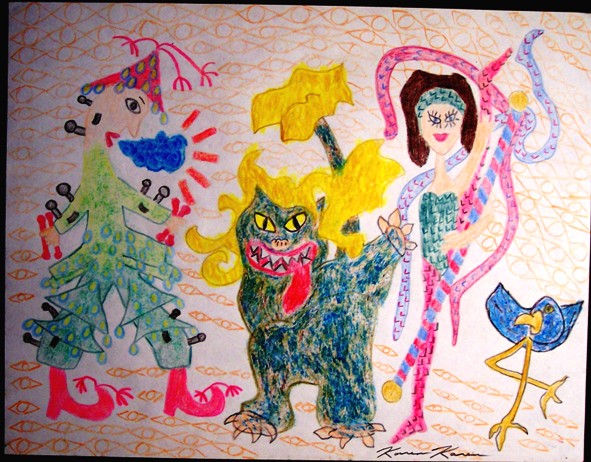 I also remember the art projects that I did on my own when I was in the hospital. Here is a drawing I made with colored pencils of three performers in a circus. You can get very board while you are locked up. I liked keeping busy. And look at the fun and curious world I got to escape to! I remember where the orange double triange and circle pattern came from. When I was first admitted because I felt suicidal my mind was so fragmented that all I could draw was the repetition of the triange and circle pattern. It made what looked like a row of eyes. I filled sheets of paper from top to bottom with the one pattern. I did this activity because there was no other activity my mind could do at that time.
I also remember the art projects that I did on my own when I was in the hospital. Here is a drawing I made with colored pencils of three performers in a circus. You can get very board while you are locked up. I liked keeping busy. And look at the fun and curious world I got to escape to! I remember where the orange double triange and circle pattern came from. When I was first admitted because I felt suicidal my mind was so fragmented that all I could draw was the repetition of the triange and circle pattern. It made what looked like a row of eyes. I filled sheets of paper from top to bottom with the one pattern. I did this activity because there was no other activity my mind could do at that time. My particular sickness creates a very uneven flow of consciousness. When consciousness was rigid, constricted, and disorganized a simple repeating pattern was neither boring nor unusual. As my mind recovered I was able to place in this pattern more variation of color, of shape and meaning. As my mind mended I probably began to socialize with the other patients at the same time that I was able to draw a human figure.
One of the benefits of making art is that the artist can work when he or she is ready. I only work when my mind is fresh and clear and lacking psychotic symptoms. This gives me a window of about two hours in the morning, and after rest, two hours in the evening. I experience fluctuations in emotions and consciousness every day. It's a continuous rollarcoaster of ability and disability, cheer and despair.
What has aided me enormously in making art has been the simple availability of a place to go and work. Art can be made at home, but isolation of that type is no good for me, and I prefer having the choice to go out and draw in public. Many times I have made art in community centers called clubhouses where the membership is exclusively mentally ill. Sometimes they served lunch. Sometimes they would bring in an art teacher to give weekly lessons. Twice I arraigned for a large art, professional art show at a clubhouse. Artists had to submit entry forms, all work was framed either by the artist or a volunteer, we had an opening reception party with an outside, professional juror presenting awards, and a price list. Both shows were a monumental task, with months of preparation work done by staff and volunteers alike. It was a great social activity for me and others. It involved a lot of responsibility. But in the end, our pride as a community soared. Many of us were shocked at what the sickest in our midst could accomplish.
The activities surrounding the creation and showing of artwork are therapeutic for persons with a mental illness. The illness is isolating but public displays of art gives a person a sense of connectedness with others. Sometimes the sick person is so fragile that they do poorly at making new acquaintances or talking for very long. Art then become a bridge from the emotional inner world to a person outside it - all without needed to talk, or risk one's personal space being violated by a stranger.
In the end I ask a question that should have been asked at the beginning. What is a definition of therapy? For instance, just last week a woman told me that on some days her job was good therapy for her. Working with other people in need helped her keep her own private troubles in perspective. She felt good about helping people. Her job made her feel valuable.
My art had been the key to my recovery. It has been good for my social life, it has aided in the increased integrity of my mind. Every artwork is a mental challenge and I don't doubt that new pathways of health are being created in my mind when I make art. Recovery from mental illness right now does not mean for me a cure. What it means is that my illness does not get worse. Art does not make me sick. I do get tired. But there is always enormous satisfaction for me when I am mentally fatigued and weak after several hours of work. I know that I extended my self to the maximum, no slacking. And a permanent record of my effort remains, to be worked on once more when consciousness coalesces, acts in a harmonious fashion, and symptoms retreat. This chance to go back to the picture always exists after a good night's sleep. I cannot count the number of times I have gone to bed eager to wake and work the next morning. In those moments I know that I live life to the fullest.

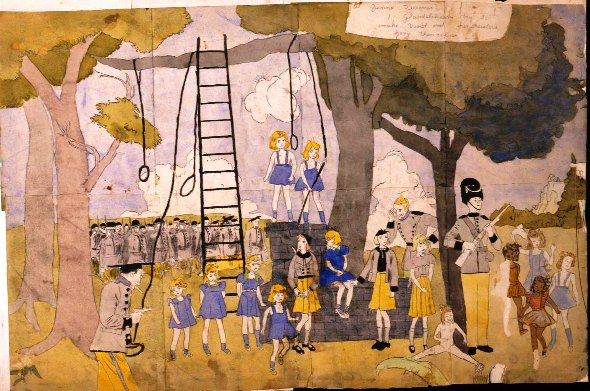
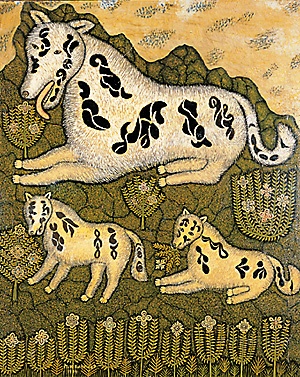 What are the artists you admire?
What are the artists you admire?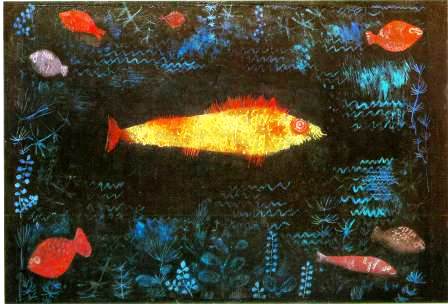
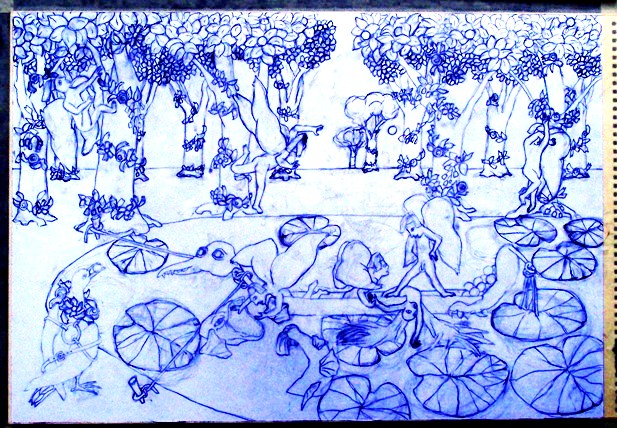
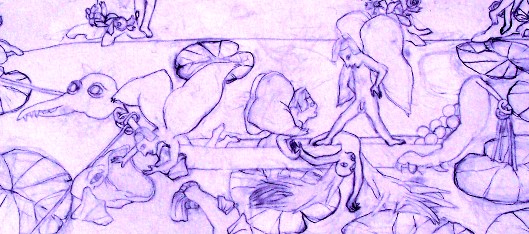
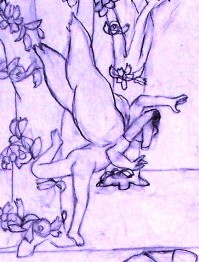 So when you see play in the drawing, is it mildly dark and violent?
So when you see play in the drawing, is it mildly dark and violent?